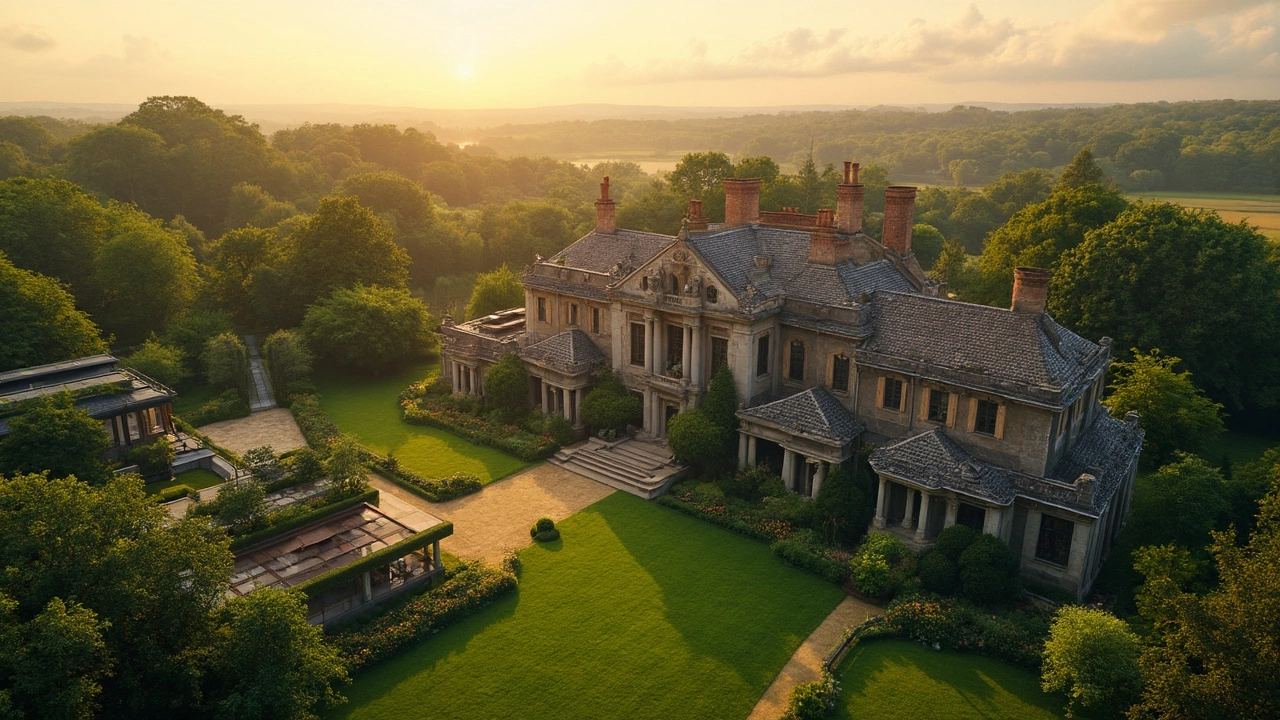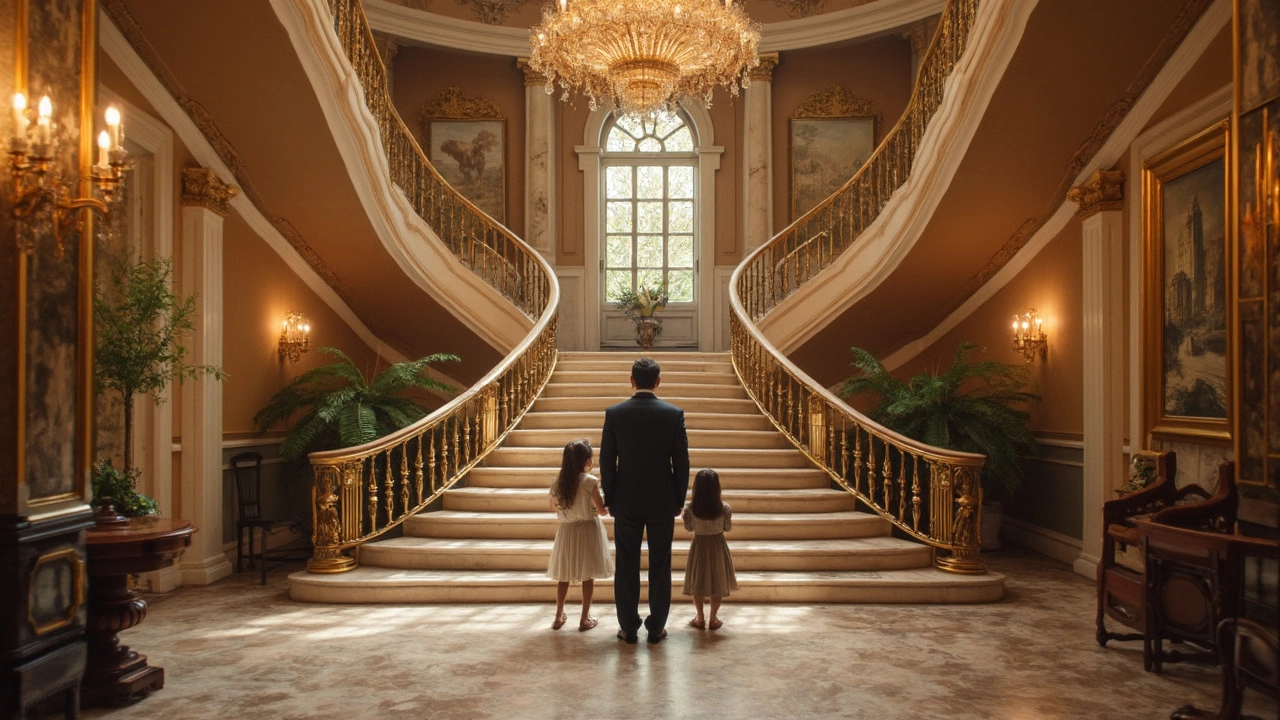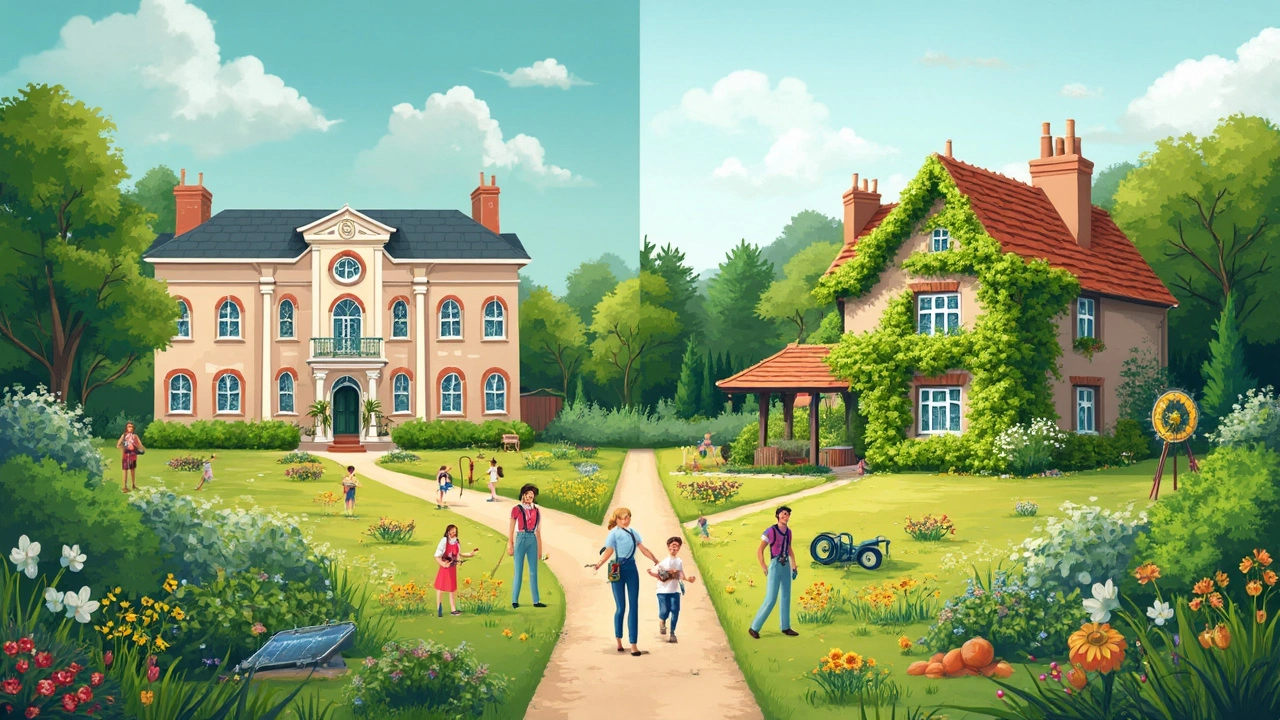Biggest House in the USA: Who Owns It and What Makes It Stand Out?

You’d think the owner of the largest house in the USA would be all over the internet waving from a balcony, right? Actually, the title goes to the Biltmore Estate in Asheville, North Carolina, owned by the Vanderbilt family and their descendants. This place isn’t just big—it’s a jaw-dropper with a whopping 178,926 square feet. For a quick comparison, the average new home in the U.S. is just around 2,300 square feet. That’s like a whole neighborhood stacked into one house.
But here’s the twist: while Biltmore sets the record for size, it doesn’t exactly set the standard for green living. When most people think of massive mansions, “eco-friendly” isn’t the first word that pops up, right? But these days, a lot of folks are more interested in homes that do a little less harm to the planet, like eco-friendly cottages. Honestly, that shift makes sense when you look at energy bills or think about how climate change is on everyone’s radar lately.
- Who Owns the Largest House in the USA?
- Standout Features of the Mansion
- Can a Mansion Be Eco-Friendly?
- The Green Cottage Revolution
- Tips for Building Big and Green
Who Owns the Largest House in the USA?
When it comes to pure square footage, the biggest house in the USA is the famous Biltmore Estate in Asheville, North Carolina. This isn’t some recent billionaire’s pet project—it dates all the way back to the late 1800s. George Washington Vanderbilt II, from the ultra-wealthy Vanderbilt family, started building the place in 1889, and it was finally finished in 1895. That’s over six years of construction!
Right now, the Biltmore Estate is still privately owned by Vanderbilt descendants, operating under a company called The Biltmore Company. The estate itself is huge—think 178,926 square feet of living space. Imagine hosting a family dinner with 250 rooms! No modern home—celebrity mansion or tech king’s fortress—even comes close to its size.
| Estate | Location | Size (sq ft) | Owner |
|---|---|---|---|
| Biltmore Estate | Asheville, NC | 178,926 | Vanderbilt Family |
| The One (for comparison) | Los Angeles, CA | 105,000 | Richard Saghian |
While The Biltmore is the size king, it’s now more of a tourist spot and event venue than a private residence. Its upkeep costs a fortune, so the family opened it to the public decades ago. Thousands visit daily and get a look at this slice of Gilded Age excess.
If you look at more modern mansions—like “The One” in Los Angeles, now owned by Richard Saghian of Fashion Nova—they look massive but still don’t top Biltmore’s record. So, the Vanderbilt name still holds the crown for the biggest house in the USA. And yet, eco-friendly upgrades? Not really on the original to-do list back in 1895.
Standout Features of the Mansion
The Biltmore Estate isn’t famous just because it’s the biggest house in the USA; it’s also packed with features that make people do a double-take. First off, this place was built in the late 1800s by George Washington Vanderbilt II, which adds a whole layer of history you just don’t get with modern mansions. The house has 250 rooms, including 35 bedrooms, 43 bathrooms, and a mind-blowing 65 fireplaces. Yup, 65. Imagine dusting those.
Now, most of us think a fancy kitchen and maybe a home theater are cool extras, but Biltmore steps it up big-time. Here’s what really sets it apart:
- Indoor Swimming Pool: Back in the day, this was cutting-edge luxury. It’s still a major talking point, even over a century later.
- Bowling Alley: Not many mansions can say they’ve got a full manual bowling alley right inside.
- Banquet Hall: This room is so huge you could host a wedding, a concert, and maybe a small circus at the same time.
- Library: Over 10,000 books line the walls. It’s like the ultimate retreat for anyone who loves to read or pretend to be a 19th-century aristocrat.
- Greenhouses and Gardens: The estate’s landscaping is just as impressive, with 8,000 acres of gardens and forest designed by Frederick Law Olmsted, the guy who did Central Park in New York.
Curious where all that space goes? Here’s a quick snapshot:
| Feature | Number |
|---|---|
| Bedrooms | 35 |
| Bathrooms | 43 |
| Fireplaces | 65 |
| Acres (estate) | 8,000 |
| Total Square Feet | 178,926 |
Unlike a lot of modern eco-friendly cottages that focus on smart spaces and sustainability, the Biltmore Estate was all about showing off what was possible with tech and design of the time. It had elevators, centralized heating, and even an early version of a refrigerator, which was wild for the 1800s. Today, you won’t find solar panels or rainwater systems, but you will get a sense of how far home design has come.

Can a Mansion Be Eco-Friendly?
Most people picture sprawling mansions guzzling up energy like there’s no tomorrow. But actually, you can make a huge home kinder to the planet. Whether you call it a sustainable mansion or a green estate, the basic rules are the same as with smaller eco-friendly cottages, just with bigger numbers.
The first trick? Focus on how the house uses energy. Big homes used to burn through electricity for heating, cooling, and lighting. Now, smart systems like geothermal pumps, solar panels, and LED lighting can chop down all that waste. The Biltmore Estate, believe it or not, has installed a massive solar field that pumps out about two megawatts of electricity. That’s enough to power several hundred average homes, and it covers a big chunk of the estate’s own needs.
Water is another issue. Enormous lawns and pools are every mansion owner’s dream, but they don’t need to be wasteful. Using rainwater catchment, low-flow fixtures, and drought-tolerant landscaping goes a long way. In California, some of the largest modern homes have swapped thirsty grass lawns for native wildflower meadows to save water.
There’s also the materials question. Instead of importing rare woods or fancy stone from across the world, eco-friendly mansions often use reclaimed wood, recycled steel, and even earth-friendly insulation made from things like denim scraps.
Here’s a quick breakdown of upgrades that even big luxury homes use to shrink their footprint:
- Solar panels for electricity and heating water
- Geothermal systems for heating and cooling
- Smart thermostats and lighting controls
- Insulated windows and doors to keep the indoor climate steady
- Recycled or locally sourced building materials
And if you’re wondering how these changes add up, check out this snapshot of typical energy savings for eco upgrades in some U.S. luxury homes:
| Upgrade | Estimated Energy Savings |
|---|---|
| Solar panels | 30-50% reduction |
| Geothermal systems | Up to 70% on heating/cooling |
| LED lighting | Up to 80% less than traditional bulbs |
| Smart thermostats | 10-15% on heating/cooling |
So, yes—a mansion can definitely go green. Of course, the bigger the house, the bigger the impact. But if the owner cares about the planet, every little upgrade matters, no matter how grand the address.
The Green Cottage Revolution
If you look at housing trends right now, eco-friendly cottages are stealing the show. Tiny doesn’t mean basic, either. People are snapping up cottages with solar panels, reclaimed-wood floors, and energy-smart appliances. And the National Association of Home Builders found that over 70% of buyers want energy-efficient features. The demand is loud and clear—folks care about their carbon footprint and their utility bills.
One big reason these cottages are catching on? They’re so much easier (and cheaper) to keep green compared to a mega-mansion like Biltmore. Technology has made it possible for small homes to be super cozy while using way less energy. Here’s what’s usually packed into these homes to set them apart:
- Solar power on the roof for electricity and sometimes even heating.
- Rainwater harvesting systems for gardens and basic needs.
- High-grade insulation to keep heating and cooling efficient.
- Low-flow toilets and showerheads to cut water use.
- Non-toxic paints, recycled siding, and other sustainable materials.
Some places, like California and Oregon, are leading the charge. You’ll find entire cottage communities there built with environment-first designs, and they’re getting popular everywhere from rural Vermont to the heart of Austin, Texas. Even big developers are joining in, with more new builds certified as green every year.
Money matters, too. On average, owners of eco-friendly cottages in the U.S. spend 30-50% less on energy bills compared to regular old homes. Here’s a quick look at how those savings stack up:
| Home Type | Avg. Monthly Energy Cost |
|---|---|
| Standard Home | $125 |
| Eco-Friendly Cottage | $60-$85 |
So when you hear about the next big home trend or someone going all-in on a super mansion, don’t forget—smaller, greener spaces are rewriting the script on what "living big" actually means.

Tips for Building Big and Green
If you dream of a huge place but care about the planet, you don’t have to pick just one. It’s possible to have a spacious home and keep it pretty earth-friendly. You just need to plan and pick stuff that works smarter, not harder. Here’s how you can roll luxury and eco housing into one package.
- Use Smart Insulation: Big houses leak energy fast. Beef up your insulation using recycled or natural materials like cellulose or sheep’s wool. If you skip on insulation, your heating and air bills will haunt you forever.
- Install Efficient Windows: Double or triple-pane windows make a world of difference. Look for Energy Star rated options—they’re designed to keep your green building plans on track by locking in comfortable temps and lowering your energy use.
- Solar Panels and Renewable Power: Got a big roof? Use it! Solar panels have dropped in price a ton (over 50% since 2010), and they can cover a big chunk of your power needs, especially in larger homes. Wind turbines are another option if your property is in a windy spot.
- Choose Sustainable Materials: Use reclaimed wood, recycled metal, or rapidly renewable stuff like bamboo. Not only does it look cool, but it keeps your sustainable mansion from being a waste machine.
- Go for Efficient Appliances and Lighting: Modern appliances are built to use way less energy—don’t buy dinosaurs from a bargain bin. LEDs last way longer than traditional bulbs and sip electricity instead of gulping it.
- Add Water-saving Tech: Rainwater collection systems and low-flow toilets or showerheads help keep utility bills in check and are real lifesavers for the planet.
People often assume that a bigger house will forever be an energy hog, but smart choices can shrink its footprint. Here’s a snapshot of how much you can save with a few changes:
| Upgrade | Avg. Annual Savings (in a large home) |
|---|---|
| Energy-efficient insulation | $900-$1,200 |
| Solar panels | $2,000-$3,000 |
| LED lighting | $400-$600 |
| Efficient HVAC system | $500-$900 |
Big houses and eco-friendly cottages don’t sit on opposite sides anymore. With some up-front effort, you can live large and still keep your conscience clear—and maybe even your wallet a little happier too.